Welcome to our exploration of Rotala Mexicana, a captivating aquatic plant that adds beauty and charm to aquariums and aquatic gardens.
With its vibrant colors and graceful foliage, Rotala Mexicana is a favorite among planted tank enthusiasts, offering a touch of Mexican aquatic beauty to any underwater landscape.
In this article, we will dive into the world of Rotala Mexicana, uncovering its attributes, native habitats, and care requirements.
We will also discuss how to incorporate this stunning aquatic plant into aquascapes, creating visually striking and harmonious underwater environments.
Key Takeaway
- Rotala Mexicana is a beautiful aquatic plant from Mexico that enhances the aesthetic appeal of aquariums and aquatic gardens.
- You can create breathtaking underwater landscapes by incorporating Rotala Mexicana into aquascape layouts and selecting suitable tank mates and companion plants.
- This plant is known for its vibrant colors and graceful foliage, making it a popular choice for aquascaping.
- Understanding Rotala Mexicana’s native habitats and care requirements is crucial for successfully cultivating and maintaining this aquatic beauty.
- Preserving the biodiversity of Rotala Mexicana and its habitats is essential for the long-term sustainability of this species and the overall aquatic ecosystem.
Quick Stats
| Attribute | Details |
| Family Name | Lythraceae |
| Common Name | Mexican Rotala |
| Origin | Mexico |
| Height | 10-30 cm (4-12 inches) |
| pH Range | 6.0 – 7.5 |
| CO2 Requirement | Moderate to High |
| Growth Rate | Moderate to Fast |
| Care Level | Moderate to Difficult |
| Color Form | Green, with potential for red hues under high light |
| Water Conditions | 22-28°C (72-82°F), soft to moderately hard water |
| Max Size | Typically remains small, with narrow leaves |
| Lighting | Moderate to High |
| Supplements | Requires nutrient-rich substrate and regular dosing of liquid fertilizers |
| Placement | Mid-ground to Background |
| Propagation | Easily propagated through stem cuttings or replanting trimmings |
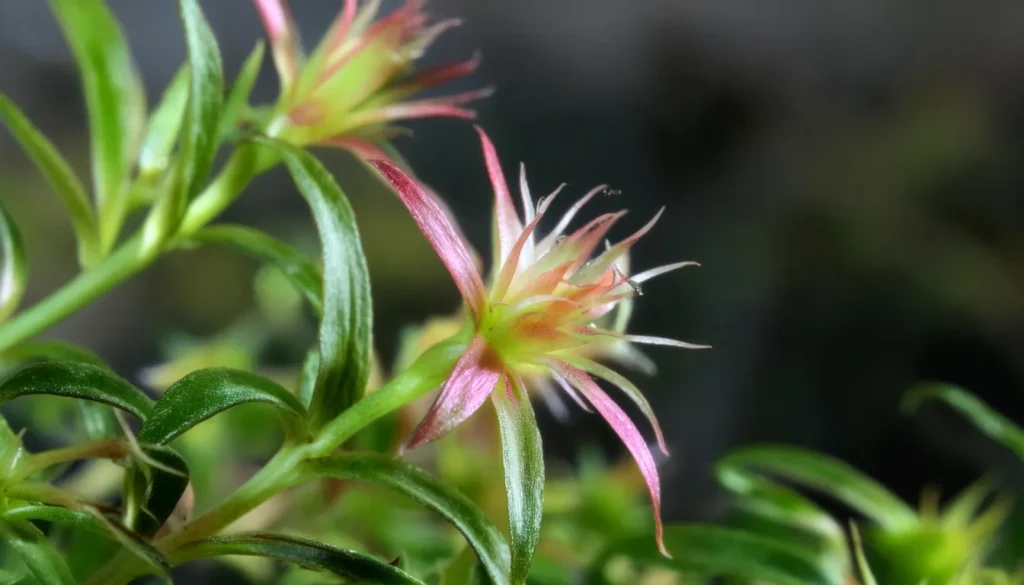
What Is Rotala Mexicana?
Rotala Mexicana is an extraordinary aquatic plant species.
Renowned for its aesthetic appeal and versatility, Rotala Mexicana has become a popular choice among aquatic enthusiasts.
Let’s explore its unique attributes, aesthetic appeal, native habitats, and vital role within aquatic ecosystems.
Attributes And Aesthetic Appeal Of Rotala Mexicana
- Rotala Mexicana possesses several notable attributes that contribute to its aesthetic appeal. Its vibrant green foliage forms intricate clusters of delicate leaves, creating a visually stunning display within aquariums.
- The plant’s slender stems provide an elegant appearance and add depth to any aquascape. The flexibility of Rotala Mexicana allows it to be shaped and arranged according to individual preferences, making it an excellent choice for both traditional and contemporary aquatic designs.
- Furthermore, Rotala Mexicana exhibits impressive growth patterns, with its stems often developing lateral shoots and runners. This allows the plant to propagate easily and create lush, dense clusters over time.
- The dynamic growth of Rotala Mexicana not only enhances its visual impact but also provides natural hiding places for aquatic organisms, fostering a harmonious and balanced ecosystem within the aquarium.
Native Habitats And Ecosystems
- Originally found in the native habitats of Mexico, Rotala Mexicana thrives in a variety of aquatic environments. It can be found in freshwater streams, rivers, and marshes, where it plays a vital role in maintaining the ecological balance of these ecosystems.
- By absorbing excess nutrients from the water, Rotala Mexicana helps prevent algal blooms and promotes water clarity, resulting in healthier conditions for the native flora and fauna.
- Within its native habitats, Rotala Mexicana often coexists with other aquatic plants, creating diverse and resilient ecosystems.
- Its presence contributes to the overall biodiversity of these environments, supporting numerous species of fish, invertebrates, and microorganisms. By replicating these natural habitats in aquariums, aquatic enthusiasts can harness the aesthetic beauty and ecological benefits that Rotala Mexicana brings to aquatic environments.
| Attributes | Aesthetic Appeal | Native Habitats | Ecosystems |
| Vibrant green foliage | Visually stunning clusters | Freshwater streams and rivers | Contributes to ecological balance |
| Slender stems | Creates depth in aquascapes | Marshes and wetlands | Prevents algal blooms |
| Flexible and easily shaped | Adapts to various designs | Diverse aquatic environments | Supports biodiversity |
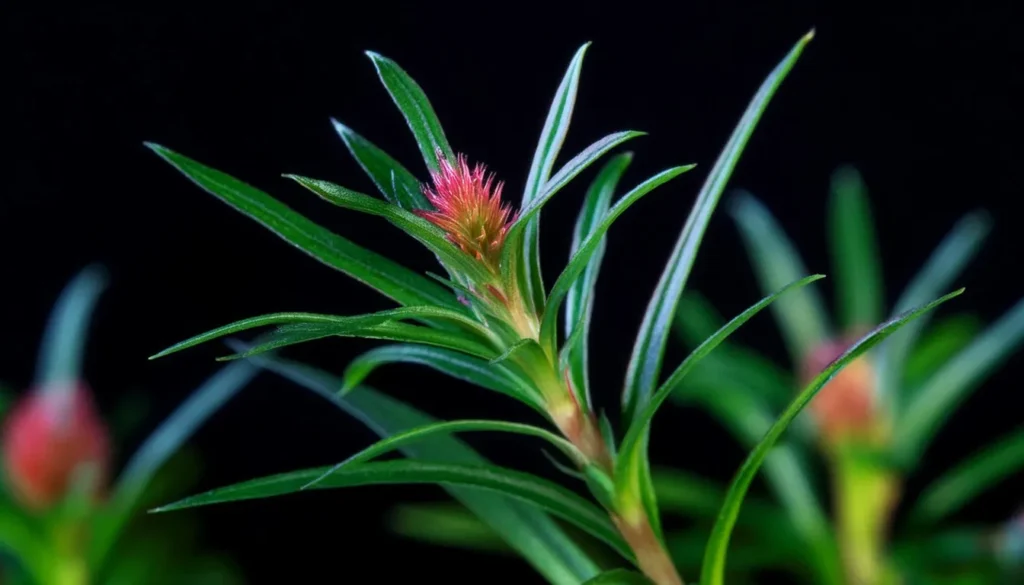
History
- Originating from Mexico, Rotala Mexicana has a rich heritage that traces back to its native habitats in the region. Over the years, it has gained popularity among aquarists worldwide due to its stunning appearance and versatile nature.
- This beautiful aquatic plant has been cultivated and admired for its vibrant colors and delicate, feathery leaves. Its unique growth patterns and elegant form make it a favorite choice for enhancing the aesthetic appeal of planted tanks and aquatic gardens.
- As Rotala Mexicana continued to captivate aquarium enthusiasts, its popularity spread beyond Mexico, reaching aquarists in different parts of the world. Today, it is cherished for its ornamental value and its ability to create visually striking underwater landscapes.
- The origins and evolution of Rotala Mexicana reflect its journey from Mexico’s natural habitats to becoming one of the most sought-after aquatic plants in the aquarium hobby. It exemplifies the incredible diversity and beauty of the underwater world.
Lighting Requirements For Optimal Growth
- Rotala Mexicana thrives under moderate to high lighting conditions. It requires a minimum of 8-10 hours of light per day to support photosynthesis and promote healthy growth.
- It is recommended to use full-spectrum LED lights or T5 fluorescent tubes with a color temperature in the range of 6500-7000K. Position the lighting fixtures above the aquarium at a suitable height to provide even coverage and prevent shading.
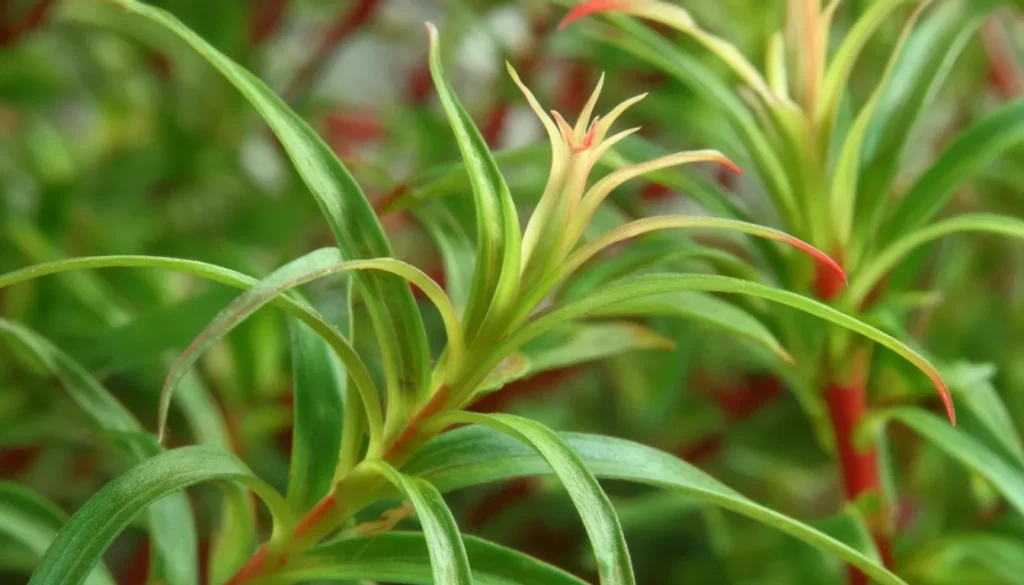
Temperature Parameters
- Metabolic Rate: Warmer temperatures within the specified range generally lead to increased metabolic rates in plants. This means that Rotala Mexicana can carry out essential physiological functions more efficiently, promoting robust growth and development.
- Photosynthesis: Temperature affects the rate of photosynthesis in aquatic plants. Within the optimal temperature range, Rotala Mexicana can efficiently utilize light energy to convert carbon dioxide and water into oxygen and glucose, which fuels growth and sustains the plant.
- Respiration and Nutrient Uptake: Temperature influences respiration rates and nutrient uptake in plants. Within the optimal range, Rotala Mexicana can effectively absorb essential nutrients from the water and substrate, supporting healthy growth and vibrant coloration.
- Disease Resistance: Maintaining the optimal temperature range helps bolster the plant’s immune system and resistance to diseases and pests. Extreme temperature fluctuations or prolonged exposure to temperatures outside the ideal range can weaken the plant and make it more susceptible to stressors.
Water Parameters And Substrate Considerations
- Rotala Mexicana prefers slightly acidic to neutral water with a pH of 6.0 and 7.5. Maintaining a stable water temperature between 72-82°F (22-28°C) is ideal for its growth. It is important to provide good water circulation and adequate filtration to ensure proper oxygenation and nutrient distribution throughout the aquarium.
- When it comes to substrate considerations, Rotala Mexicana thrives in nutrient-rich substrates such as aquatic soil or nutrient-rich gravel. The substrate should be fine-grained to allow the plant’s roots to anchor properly and absorb nutrients efficiently. Adding a layer of laterite or clay-based substrate at the bottom can further enhance nutrient availability.
- Regular water tests are essential to monitor and maintain the water parameters consistently. This will help ensure that the conditions in the aquarium are suitable for the growth and well-being of Rotala Mexicana.
Substrate Requirement
- Nutrient-Rich Substrate: Choose a substrate that is rich in nutrients to provide a solid foundation for Rotala Mexicana’s root system. Substrates specifically designed for planted aquariums, such as nutrient-rich plant substrates or aquasoils, are excellent options. These substrates typically contain essential nutrients like nitrogen, phosphorus, and potassium, as well as trace elements that support plant growth.
- Fine-Grained Substrate: Rotala Mexicana has delicate roots, so a fine-grained substrate can be beneficial. Fine substrates, such as sand or fine gravel, allow the roots to spread easily and anchor the plant securely. Avoid coarse substrates that may damage the roots or impede root growth.
- Depth: Aim for a substrate depth of at least 2 to 3 inches (5 to 7.5 cm) to provide ample space for root development. Deeper substrates can accommodate longer root systems and help stabilize the plants, especially in taller aquariums.
- Substrate Additives: Consider adding substrate additives like root tabs or nutrient-rich capsules to supplement the substrate with additional nutrients. These additives can provide a localized nutrient boost around the roots of Rotala Mexicana, promoting healthy growth and vibrant coloration.
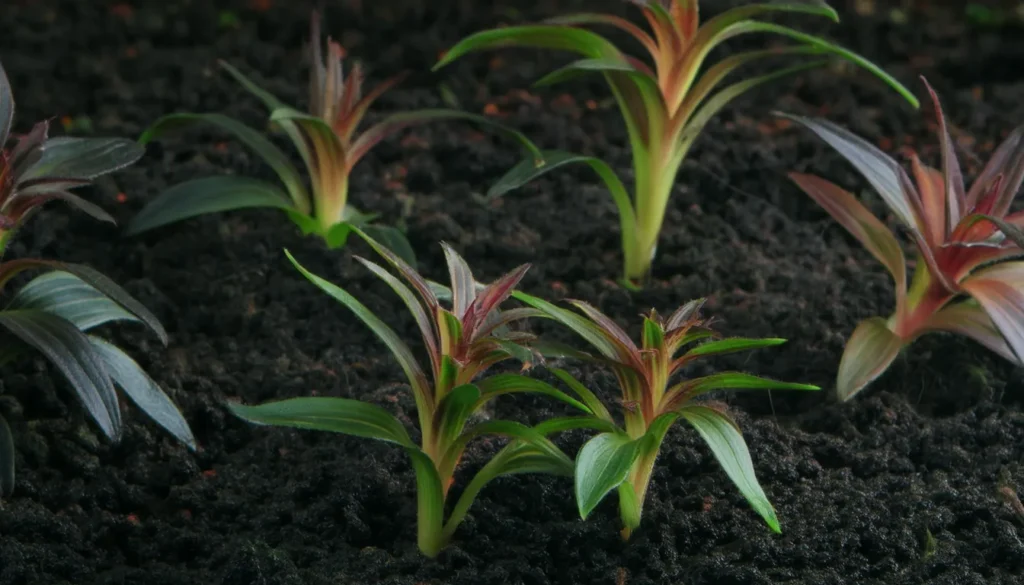
Incorporating Rotala Mexicana In Aquascape Layouts
- Foreground Accent: Plant Rotala Mexicana as a foreground accent to create depth and dimension in your aquascape. Its delicate leaves and vibrant color will draw the viewer’s attention and add visual interest to the layout.
- Midground Texture: Use Rotala Mexicana as a midground plant to add texture to your aquascape. Its slim, elongated stems and plentiful foliage create a lush and vibrant appearance.
- Background Filler: Incorporate Rotala Mexicana as a background filler plant to create a lush green backdrop for your aquascape. Its fast-growing nature and dense foliage are perfect for filling in empty spaces and creating a vibrant background.
RELATED: Dwarf Chain Sword For A Lush Carpet In Your Aquascape
Recommended Tank Size
- Small Tanks: Rotala Mexicana can be grown in smaller aquariums, such as nano tanks or tanks with capacities ranging from 5 to 20 gallons. In smaller tanks, you may need to trim and manage the plant more frequently to prevent overcrowding and maintain an aesthetically pleasing appearance.
- Medium Tanks: For medium-sized aquariums, ranging from 20 to 50 gallons, Rotala Mexicana can be used as a background or midground plant. Its vibrant foliage can add depth and color to the aquascape without overpowering smaller plants or fish.
- Large Tanks: In larger aquariums, exceeding 50 gallons in capacity, Rotala Mexicana can be planted in greater quantities to create lush, dense backgrounds or focal points. Larger tanks provide more space for the plants to grow and spread, allowing for impressive displays of foliage.
- Aquascape Design: Consider the overall design and layout of your aquascape when selecting the tank size. Rotala Mexicana can be used to create striking vertical accents, fill in empty spaces, or create dense background plantings, depending on your preferences and the size of your tank.
- Compatibility: Take into account the needs and compatibility of other tank inhabitants, such as fish, shrimp, and snails. Ensure that the tank size can accommodate the needs of both the plants and the animals, providing ample space and suitable environmental conditions for all inhabitants.
Suitable Tank Mates And Companion Plants
- Micro Fish: Small fish species like neon tetras, dwarf rasboras, or ember tetras can be excellent tank mates for Rotala Mexicana. Their small size won’t overshadow the plant’s delicate beauty, and they will add movement and liveliness to the aquascape.
- Shrimp Species: Amano shrimp and cherry shrimp are popular choices for aquascapes with Rotala Mexicana. These shrimp species are peaceful and won’t disturb the plant. They also help maintain the tank’s ecosystem by cleaning algae and debris.
- Anubias Species: Anubias plants, such as Anubias nana or Anubias coffeefolia, make great companions for Rotala Mexicana. The contrasting leaf shapes and colors create an interesting visual contrast and add variety to the aquascape.

Nutritional Needs
To thrive, Rotala Mexicana, like all aquatic plants, requires several essential nutrients.
Providing these nutrients in the right balance is crucial for its growth and overall health. Here are the primary nutritional needs of Rotala Mexicana:
Macronutrients
- Nitrogen (N): Nitrogen is a critical component of chlorophyll, the pigment responsible for photosynthesis. It’s essential for overall plant growth and protein synthesis.
- Phosphorus (P): Phosphorus is necessary for energy transfer within the plant and is vital for processes such as photosynthesis, respiration, and cell division.
- Potassium (K): Potassium plays a key role in enzyme activation, osmoregulation, and maintaining turgor pressure in plant cells. It’s essential for overall plant health and stress tolerance.
Secondary Nutrients
- Calcium (Ca): Calcium contributes to cell wall structure and stability, as well as nutrient uptake and transport within the plant.
- Magnesium (Mg): Magnesium is a central component of chlorophyll molecules and is involved in photosynthesis. It also plays a role in enzyme activation and energy metabolism.
Micronutrients (Trace Elements)
- Iron (Fe): Iron is essential for chlorophyll synthesis and is involved in electron transport during photosynthesis. Iron deficiency can lead to chlorosis (yellowing of leaves).
- Manganese (Mn), Zinc (Zn), Copper (Cu), Boron (B), Molybdenum (Mo), and Chlorine (Cl): These micronutrients are required in smaller quantities but are essential for various metabolic processes within the plant, including enzyme activation and hormone synthesis.
Rotala Mexicana Cultivation Techniques And Tips
Successful cultivation of Rotala Mexicana requires specific techniques and tips to ensure optimal growth and propagation. Here are some essential guidelines to follow:
- Provide adequate lighting: Rotala Mexicana thrives in moderate to high lighting conditions. Ensure your aquarium has proper lighting to support its growth.
- Maintain optimal water parameters: This aquatic plant prefers slightly acidic to neutral water with a pH range of 6.5 to 7.5. Keep the water temperature between 72°F and 82°F for best results.
- Choose the right substrate: Use a nutrient-rich substrate that promotes root development and provides essential nutrients for Rotala Mexicana.
- Regularly fertilize: Supplement your aquarium with a balanced liquid fertilizer to provide the necessary nutrients for healthy growth.
- Prune regularly: Pruning helps maintain the shape and density of Rotala Mexicana. Trim any excess growth to promote bushier and more vibrant foliage.
Plant Propagation Tips
- Select Healthy Stems: Choose stems that are healthy, free from any signs of disease or damage, and have vibrant green leaves. Healthy stems will have a better chance of rooting and establishing new growth.
- Prepare Equipment: Use clean, sharp scissors or aquascaping tools to make clean cuts. Avoid using dull or dirty tools, as they can damage the plant and increase the risk of infection.
- Take Cuttings: Using your scissors, cut a portion of the stem just below a node (where leaves are attached). Each cutting should be around 2 to 4 inches (5 to 10 cm) long, with several leaves attached. Ensure that each cutting has at least one or two nodes, as this is where new roots will form.
- Trim Leaves: Remove any leaves from the bottom portion of the cutting that will be planted in the substrate. Leaving a few leaves at the top of the cutting will help the plant continue photosynthesis while it roots.
- Plant Cuttings: Insert the cuttings into the substrate, making sure to bury the bottom portion of the stem securely. Plant them at an angle to encourage new growth and prevent them from floating away. You can plant multiple cuttings close together to create a dense grouping.
- Provide Optimal Conditions: Maintain stable water parameters, adequate lighting, and nutrient levels to support root development and new growth. Ensure proper circulation and gentle water flow around the cuttings.
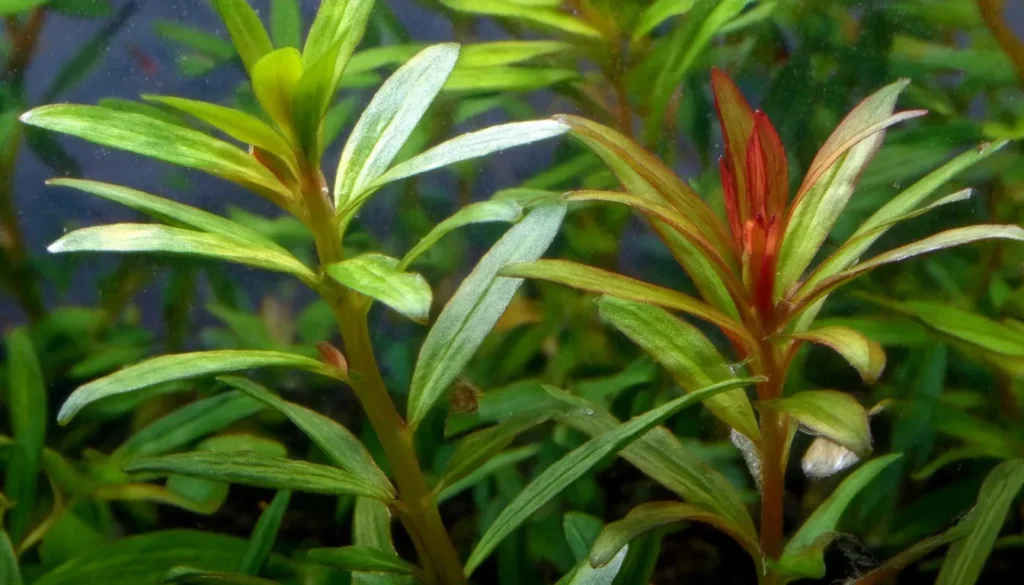
Benefits Of Planting Rotala Mexicana Care
- Water Quality Improvement: Like all aquatic plants, Rotala Mexicana helps to naturally filter the water in your aquarium by absorbing excess nutrients, such as nitrates and phosphates, that can contribute to algae growth. This can help to maintain water quality and clarity, creating a healthier environment for your fish and other aquatic inhabitants.
- Oxygenation: During photosynthesis, Rotala Mexicana absorbs carbon dioxide and releases oxygen into the water. This process helps to oxygenate the aquarium, providing vital respiratory support for fish, shrimp, and other aquatic organisms.
- Algae Control: By competing with algae for nutrients and light, Rotala Mexicana can help to inhibit the growth of unwanted algae in your aquarium. The dense growth of Rotala Mexicana can shade the substrate and create competition for resources, reducing the likelihood of algae outbreaks.
- Aquascape Enhancement: Rotala Mexicana adds visual interest and vibrant coloration to your aquascape with its striking red leaves. It can be used to create dramatic focal points, contrast with other plant species, or complement the overall aesthetic of your underwater landscape.
- Habitat and Shelter: The dense growth of Rotala Mexicana provides habitat and shelter for fish, shrimp, and other aquatic creatures. It offers refuge for shy or breeding fish, as well as a grazing surface for algae-eating species.
Algae Prevention And Management Strategies
- Maintain Proper Lighting: Ensure that your aquarium has appropriate lighting for the needs of Rotala Mexicana. Avoid excessive lighting durations or intensity, as this can promote algae growth. Implement a consistent lighting schedule to emulate natural day and night cycles.
- Control Nutrient Levels: Maintain balanced nutrient levels in your aquarium, including carbon dioxide (CO2), nitrates, and phosphates. Regular water testing can help you identify and address any imbalances that may contribute to algae growth.
- Regular Water Changes: Perform regular water changes to prevent the buildup of organic compounds, which can fuel algae growth. Consider using a gravel vacuum to remove any debris or detritus from the substrate.
- Introduce Algae Eaters: Certain fish, such as Siamese algae eaters or Otocinclus catfish, can help control algae growth by consuming algae as part of their diet. However, ensure that these fish are compatible with Rotala Mexicana and the other inhabitants of your aquarium.
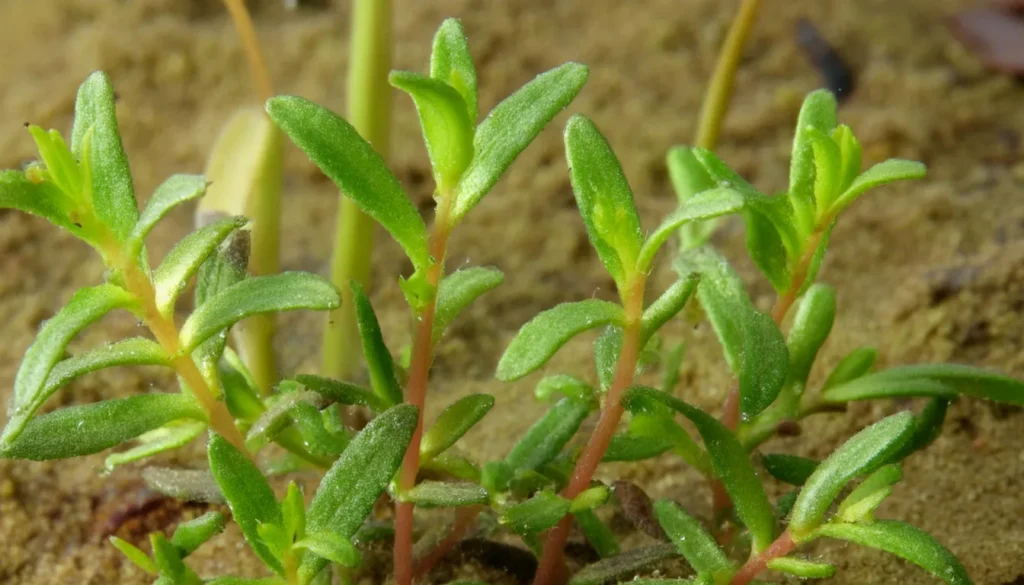
Conclusion
As we conclude our journey into the world of Rotala Mexicana, we are left in awe of its unparalleled beauty and its significance in the realm of aquatic gardening.
This Mexican aquatic gem has captured the hearts of aquarium enthusiasts with its unique attributes and aesthetic appeal.
Throughout this article, we have explored the origins of Rotala Mexicana and its native habitats, gaining a deeper understanding of its natural ecosystems.
We have also delved into the secrets of caring for this magnificent plant, providing cultivation guidelines and propagation techniques.
While Rotala Mexicana shines on its own, it also plays a vital role in aquatic conservation efforts.
We have highlighted its conservation designation and the importance of sustainable practices to preserve its biodiversity and protect its natural habitats.
Frequently Asked Questions
How Can I Encourage The Growth Of Lateral Shoots And Runners In Rotala Mexicana?
To encourage the growth of lateral shoots and runners in Rotala Mexicana, provide it with ample lighting, nutrient-rich substrate, and proper fertilization.
Pruning the main stem can also stimulate the production of lateral shoots and runners.
Which Other Aquarium Plant Species Complement Rotala Mexicana?
A variety of aquarium plant species, such as Anubias, Cryptocoryne, and Ludwigia, can complement Rotala Mexicana.
These plants have similar care requirements and can create a visually stunning underwater landscape when combined with Rotala Mexicana.
What Is The Conservation Status Of Rotala Mexicana?
This plant is not currently listed as a threatened or endangered species.
However, preserving its natural habitats and practicing sustainable cultivation and collection methods are essential to ensure its long-term survival.
How Can I Maintain And Care For Rotala Mexicana In My Aquarium?
Regular pruning is important to maintain the shape and health of Rotala Mexicana.
Remove any dead or decaying leaves and trim the plant to prevent it from becoming overgrown.
Implementing proper water maintenance and preventing algae through regular tank maintenance will also contribute to its overall health and appearance.
How Can I Incorporate Rotala Mexicana In My Aquascape Layout?
When incorporating this plant in an aquascape, consider placing it in the foreground or midground to create depth and visual interest.
Combine it with taller background plants and utilize rocks or driftwood as natural focal points.
Selecting suitable tank mates, such as small schooling fish or shrimp, can also enhance the overall look of the aquascape.
- Unveiling The Wonders Of Riccia Fluitans In Aquascapes - August 7, 2024
- Vallisneria Gigantea Var. Guide To Care And Cultivation At Home - July 31, 2024
- Vesicularia Dubyana Care & Growth Guide Tips For Beginner Gardeners - July 30, 2024
